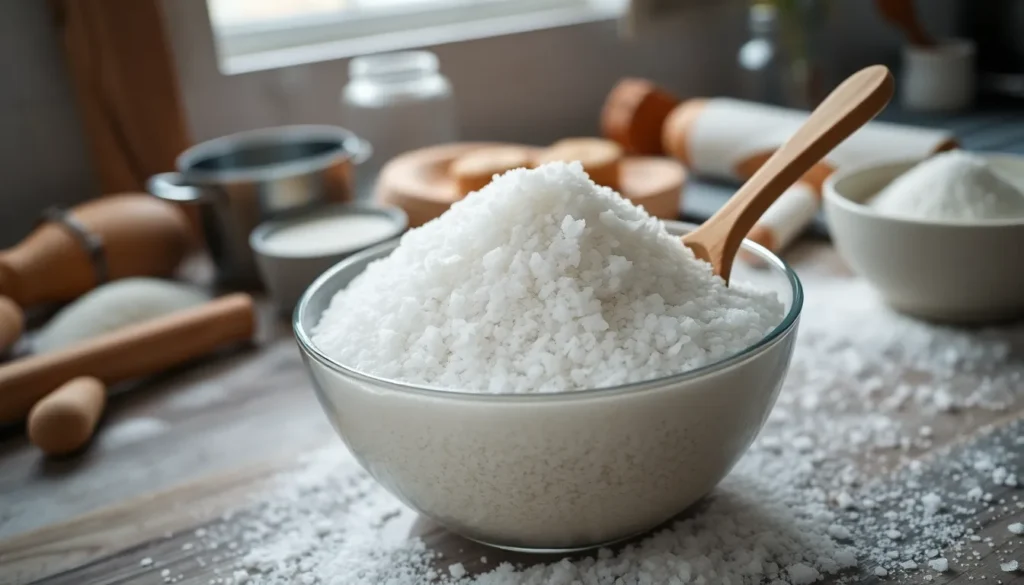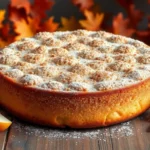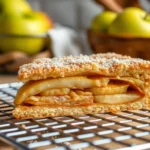We’ve all been there – standing in the baking aisle wondering if we can substitute regular sugar for that mysterious “caster sugar” called for in our favorite recipe. This fine-textured sweetener isn’t just fancy marketing; it’s actually a game-changer that can make or break your baking success.
Caster sugar sits perfectly between granulated sugar and powdered sugar in terms of crystal size. Its superfine texture dissolves faster and creates smoother batters, making it essential for delicate meringues, light sponge cakes, and silky buttercreams. British bakers have sworn by it for generations, and once you understand its magic, you’ll see why.
Whether you’re tackling a temperamental soufflé or perfecting your chocolate chip cookies, knowing when and how to use caster sugar will elevate your baking game. We’ll break down everything you need to know about this baker’s secret weapon and show you how to make it at home.
What Is Caster Sugar
Caster sugar is a superfine granulated sugar with crystals that measure smaller than regular granulated sugar but larger than powdered sugar. We recognize this specialty baking ingredient by its fine texture that resembles table salt or very fine sand. The sugar crystals dissolve rapidly when mixed with liquids or creamed with butter, making it essential for creating smooth textures in delicate baked goods.
British and Australian bakers have used caster sugar for generations, though American bakers often call it superfine sugar or baker’s sugar. Manufacturing processes create these tiny crystals by grinding regular granulated sugar through specialized screens that filter out larger particles. The result produces uniform crystals that measure approximately 0.35mm in diameter.
We find caster sugar performs differently than regular granulated sugar because of its increased surface area. Each small crystal exposes more surface to moisture and heat, allowing faster dissolution during mixing. This rapid dissolving prevents the gritty texture that can occur when regular sugar fails to fully incorporate into batters or meringues.
The sugar maintains the same sweetness level as regular granulated sugar since both contain pure sucrose. But, the fine texture creates different results in finished products. Cakes made with caster sugar develop finer crumbs, while meringues achieve better stability and smoother textures. Buttercreams become silkier when we use caster sugar instead of regular granulated varieties.
Professional bakers prefer caster sugar for temperature sensitive preparations like Swiss meringue buttercream or Italian meringue. The fine crystals dissolve completely at lower temperatures, preventing crystallization issues that can ruin delicate preparations. We also use it in cold preparations like whipped cream or chilled mousses where complete dissolution matters most.
Types of Caster Sugar
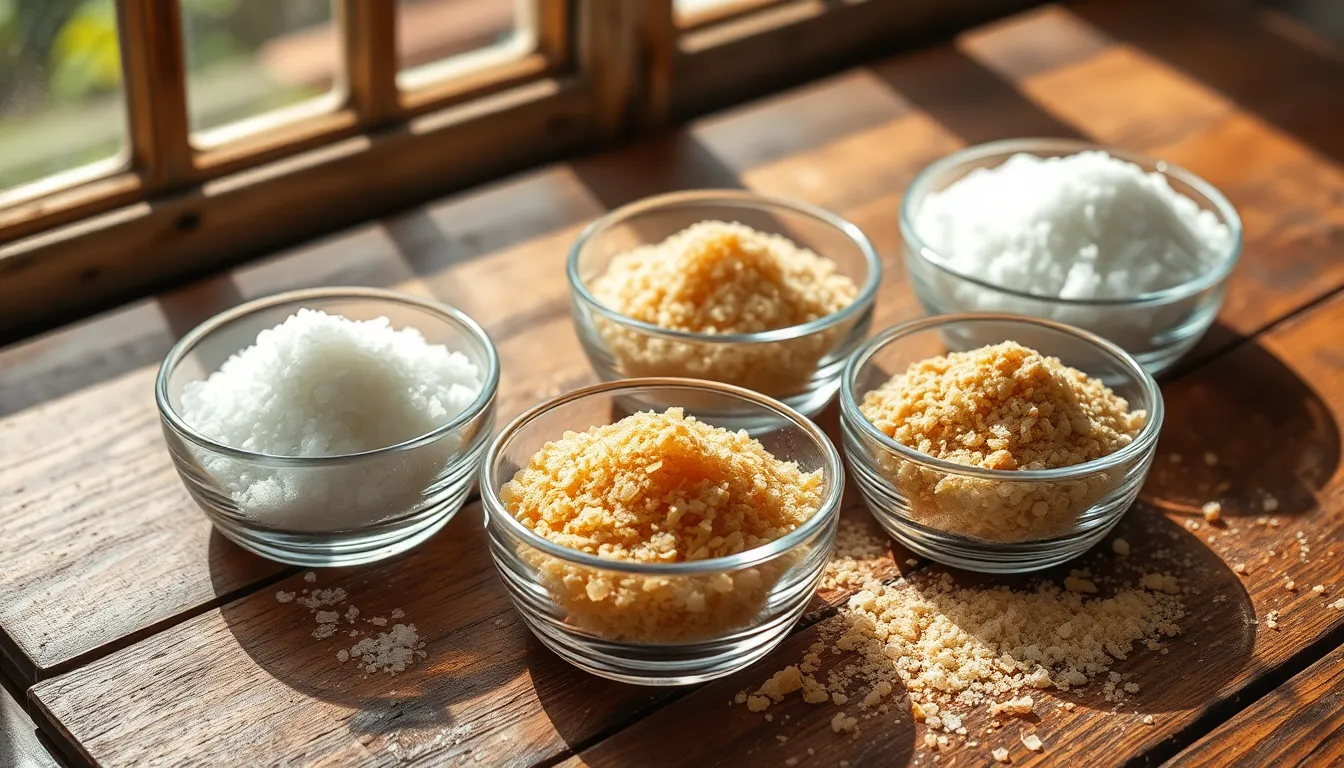
Now that we understand the basics of caster sugar, let’s explore the different varieties available to bakers. Each type offers unique characteristics that can enhance our baking results.
Regular Caster Sugar
Regular caster sugar serves as the standard white variety made from refined sugar cane or sugar beet. We recognize this type by its pure white appearance and consistent fine grain size that dissolves quickly in our recipes. The manufacturing process involves grinding regular granulated sugar into smaller crystals without adding any anti-caking agents or additives to prevent clumping. This pure form makes regular caster sugar our go-to choice for recipes requiring neutral sweetness without additional flavors. We find it particularly effective in meringues, custards, and delicate cakes where we want the sugar to dissolve completely without affecting the final taste or color of our baked goods.
Golden Caster Sugar
Golden caster sugar, also known as raw caster sugar, provides a less refined alternative with distinctive characteristics. This variety retains its golden-brown color due to natural molasses from sugar cane that remains during processing rather than being artificially added. We appreciate the slightly caramel-like flavor that golden caster sugar brings to our recipes, adding depth without overwhelming sweetness. The fine grain size matches regular caster sugar, allowing us to substitute it interchangeably in most baking recipes. We often choose golden caster sugar when we want to add subtle complexity to cookies, muffins, or coffee cakes where the hint of molasses enhances rather than masks other flavors.
Organic Caster Sugar
Organic caster sugar offers the same fine texture benefits while meeting strict organic certification standards. We source this variety from organically grown sugar cane or sugar beets processed without synthetic chemicals, pesticides, or fertilizers. The production process maintains the characteristic fine grain size that dissolves quickly in our recipes while ensuring environmental sustainability. We choose organic caster sugar when we prioritize organic ingredients in our baking or when preparing treats for those with exact dietary preferences. Like regular caster sugar, organic varieties contain no anti-caking agents, making them suitable for all our baking applications from delicate pavlovas to smooth buttercreams.
How Caster Sugar Differs from Other Sugars
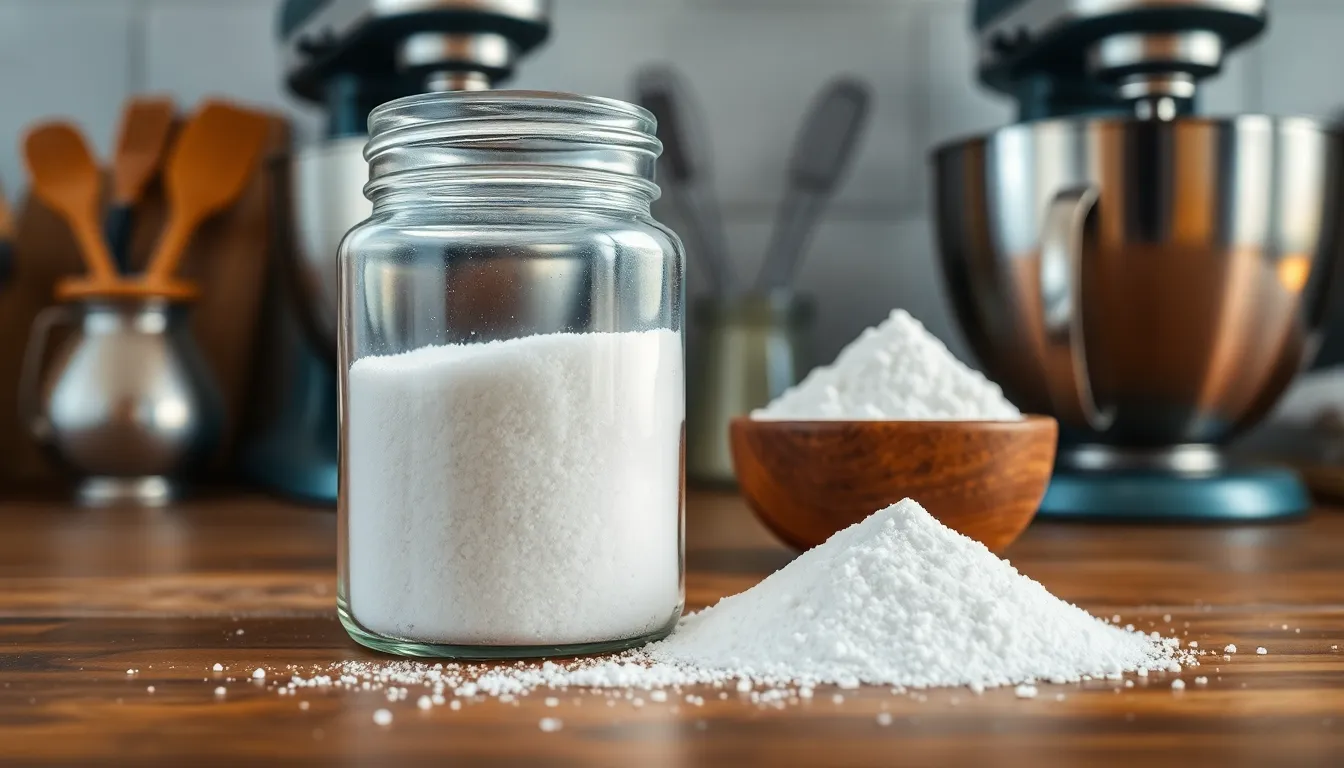
Understanding the distinct characteristics of caster sugar compared to other sugar types helps us make informed choices in our baking projects. We need to examine the key differences in texture, dissolving properties, and best applications for each sugar variety.
Caster Sugar vs Granulated Sugar
Caster sugar features significantly finer grains than regular granulated sugar, creating a texture that dissolves much faster in batters and mixtures. We find that granulated sugar has coarser crystals that require more time and mixing to fully incorporate into recipes. The quick dissolving nature of caster sugar makes it our preferred choice for delicate baked goods like meringues and sponge cakes where smooth texture is essential.
Regular granulated sugar works well for everyday baking and general sweetening purposes where the slightly longer dissolving time doesn’t affect the final product. We use granulated sugar in cookies, muffins, and other sturdy baked goods where texture variations are less noticeable. The coarser grain structure of granulated sugar also provides better creaming action when we beat it with butter for certain cake recipes.
Caster Sugar vs Powdered Sugar
Caster sugar maintains its granular structure even though being finely ground, while powdered sugar is processed into a true powder consistency. We notice that powdered sugar contains 3 to 5 percent cornstarch as an anti-caking agent, which affects both flavor and performance in recipes. This additive gives powdered sugar its characteristic smooth, dusty texture but can leave a slight chalky aftertaste in some applications.
The pure sugar composition of caster sugar delivers clean sweetness without any additional flavors or textures. We prefer caster sugar for recipes where we want sugar to dissolve completely without the interference of cornstarch. Powdered sugar excels in icings, frostings, and dusting applications where its ultra-fine consistency creates smooth, professional finishes.
Caster Sugar vs Brown Sugar
Caster sugar comes in both white and golden varieties, with the golden version retaining some natural molasses for subtle flavor complexity. We distinguish between golden caster sugar and brown sugar because they serve different purposes even though some visual similarities. Brown sugar contains added molasses in US-style varieties, creating a moist, sticky texture with pronounced molasses flavor.
Golden caster sugar offers unrefined characteristics with natural molasses content, but it maintains the fine, free-flowing texture that dissolves quickly. We cannot substitute brown sugar for golden caster sugar because brown sugar’s moisture content and stronger flavor profile will alter recipe outcomes. The fine grain structure of caster sugar varieties makes them superior for applications requiring smooth dissolution, while brown sugar works best in recipes that benefit from its distinctive flavor and moisture properties.
How to Make Caster Sugar at Home
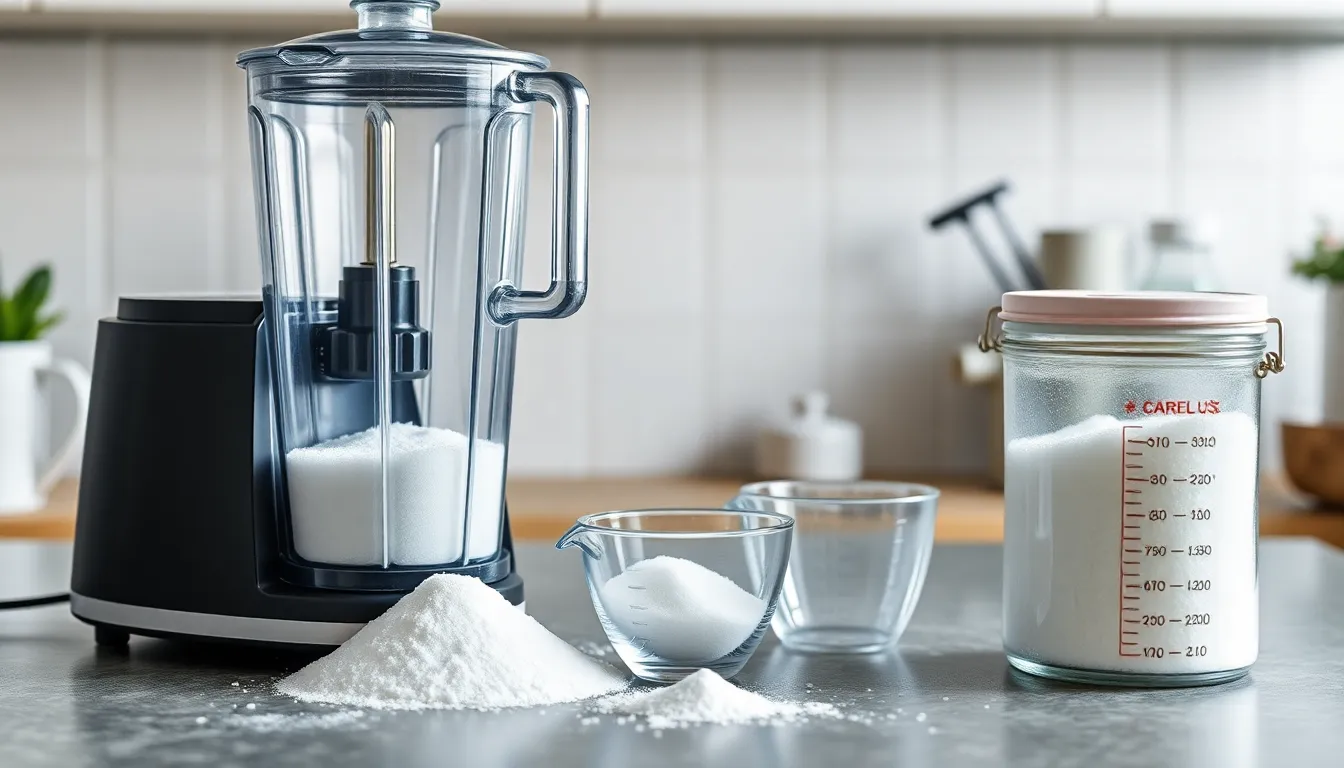
Making caster sugar at home is remarkably simple and requires just granulated sugar and basic kitchen equipment. We can create this superfine sugar in minutes using common appliances found in most kitchens.
Equipment Needed
Creating homemade caster sugar requires minimal equipment that most home bakers already own:
- Blender, food processor, or coffee grinder (must be clean and dry)
- Measuring cups or kitchen scale for accurate measurements
- Airtight storage container for proper storage
Instructions for Homemade Caster Sugar
Step 1: Measure Your Sugar
Start with granulated white sugar as your base ingredient. We recommend measuring 1 cup of granulated sugar, which yields approximately 1 cup of caster sugar.
Step 2: Process the Sugar
Place the measured granulated sugar into your chosen appliance. Process the sugar using short pulses for 15 to 30 seconds. Avoid continuous processing to prevent overheating the sugar.
Step 3: Check the Texture
Stop processing and examine the sugar’s consistency. The finished product should resemble fine sand rather than flour. We want grains that are noticeably finer than regular sugar but still maintain a granular structure.
Step 4: Avoid Over-Processing
Monitor the texture carefully during processing. Over-processing transforms caster sugar into powdered sugar, which contains different properties and uses in baking.
Step 5: Store Properly
Transfer your homemade caster sugar to an airtight container immediately after processing. This prevents moisture absorption and clumping while maintaining the fine texture.
| Processing Time | Equipment Type | Batch Size | Result |
|---|---|---|---|
| 15-30 seconds | Food processor | 1 cup | Fine granular texture |
| 10-20 seconds | High-speed blender | 1 cup | Optimal superfine consistency |
| 20-30 seconds | Coffee grinder | 1/2 cup | Even, consistent grains |
Always use clean and dry equipment to prevent sugar clumping. Homemade caster sugar substitutes perfectly for store-bought superfine sugar in any recipe requiring quick dissolution and smooth texture.
Best Uses for Caster Sugar in Baking

Caster sugar’s fine texture and rapid dissolution properties make it exceptionally valuable for exact baking applications where smooth textures and consistent results matter most. Understanding when to use this superfine sugar can elevate our baking from good to exceptional.
Meringues and Whipped Cream
Meringues rely heavily on caster sugar’s quick dissolution to achieve their signature light and airy texture. The fine crystals dissolve completely during whipping, preventing the formation of sugar crystals that could weigh down the delicate foam structure. When we use caster sugar in meringues, we ensure a smooth finish without any grittiness that might occur with regular granulated sugar.
Whipped cream benefits similarly from caster sugar’s dissolving properties. The sugar incorporates seamlessly into the cream during whipping, maintaining the light texture while providing sweetness. This rapid dissolution prevents the sugar from settling at the bottom of our bowl or creating unwanted texture variations in the final product.
Sponge Cakes and Light Desserts
Sponge cakes showcase caster sugar’s ability to create delicate textures in baked goods. The fine crystals dissolve completely during mixing, contributing to the overall lightness and even structure that defines a perfect sponge cake. Our batters achieve better consistency when we use caster sugar, as it integrates more thoroughly than coarser sugars.
Light desserts such as soufflés and delicate custards benefit from caster sugar’s seamless dissolution. The sugar dissolves quickly without requiring extensive mixing, which helps preserve the airy textures these desserts depend on. This characteristic makes caster sugar particularly valuable when working with temperature-sensitive preparations that cannot withstand prolonged mixing.
Cookie and Pastry Applications
Cookie recipes can use caster sugar to achieve more delicate and crumbly textures compared to those made with granulated sugar. While not always our first choice for cookies, caster sugar creates finer crumbs and more tender results in certain applications. Shortbread cookies particularly benefit from this fine texture, producing a more refined eating experience.
Pastry dough applications show mixed results with caster sugar depending on the desired outcome. For delicate pastries where tenderness matters more than structure, caster sugar provides excellent results. But, we must consider that some pastries require the structure that larger sugar crystals provide, making granulated sugar more appropriate for those exact applications.
Where to Buy Caster Sugar

Finding caster sugar has become easier as more retailers recognize its importance for serious baking. We can locate this essential ingredient through various shopping channels depending on our convenience and preferences.
Grocery Store Locations
Most major grocery stores stock caster sugar in their baking aisles alongside other specialty sugars. We typically find it labeled as “superfine sugar” or “baker’s sugar” rather than caster sugar in American stores. Target, Walmart, and Kroger commonly carry this product in their baking sections. Specialty grocery stores like Whole Foods and Fresh Market often maintain larger selections of baking sugars including organic and golden varieties of caster sugar.
The sugar usually appears in boxes or bags near other granulated sugars and baking essentials. We recommend checking both the regular sugar section and any specialty baking areas since stores sometimes separate premium baking ingredients. Some stores place caster sugar near cake decorating supplies or in international food sections.
Online Shopping Options
Online retailers provide convenient access to various caster sugar brands and types. Amazon offers multiple options including organic and golden caster sugar varieties with reliable delivery schedules. We can also find specialty baking suppliers online that carry restaurant-quality caster sugar in bulk quantities.
International goods retailers online specialize in authentic British and Australian caster sugar brands. These retailers often provide better pricing for frequent bakers who use caster sugar regularly. Many online baking supply companies offer subscription services for consistent delivery of baking essentials including caster sugar.
For those unable to locate caster sugar locally, we can create our own by processing regular granulated sugar in a blender or spice grinder until it reaches the desired fine texture.
Storage Tips for Caster Sugar

Proper storage ensures caster sugar maintains its fine texture and dissolving properties for optimal baking results. We recommend storing caster sugar in an airtight container at room temperature to protect it from moisture and environmental factors that could affect its quality.
Choose the Right Storage Location
Room temperature storage works best for caster sugar since refrigeration or freezing is unnecessary. A cool dry pantry away from direct sunlight provides ideal conditions for maintaining the sugar’s fine consistency. Moisture exposure can cause the delicate crystals to clump together and compromise the sugar’s quick dissolving properties.
Prevent Moisture and Clumping
Airtight containers create the best barrier against humidity and moisture absorption. While caster sugar is less prone to clumping than powdered sugar it can still absorb moisture over time in humid environments. Glass jars with tight fitting lids or plastic containers with secure seals both work effectively for long term storage.
Monitor Sugar Quality Over Time
Regular quality checks help ensure stored caster sugar remains usable for baking projects. We suggest examining the sugar for any signs of moisture buildup or unusual odors before using it in recipes especially after extended storage periods. Free flowing sugar with its characteristic fine texture indicates proper storage conditions have been maintained.
| Storage Factor | Recommendation |
|---|---|
| Temperature | Room temperature |
| Location | Cool dry pantry |
| Container Type | Airtight glass or plastic |
| Humidity Control | Away from moisture sources |
| Light Exposure | Away from direct sunlight |
Maintain Optimal Texture
The fine granular structure that makes caster sugar ideal for smooth batters and quick dissolution requires protection from environmental factors. Unlike powdered sugar caster sugar contains no anti caking agents like cornstarch so proper storage becomes even more critical for preserving its baking performance. Well stored caster sugar retains its superfine texture and continues to dissolve rapidly in recipes requiring smooth consistent results.
Substitutions for Caster Sugar
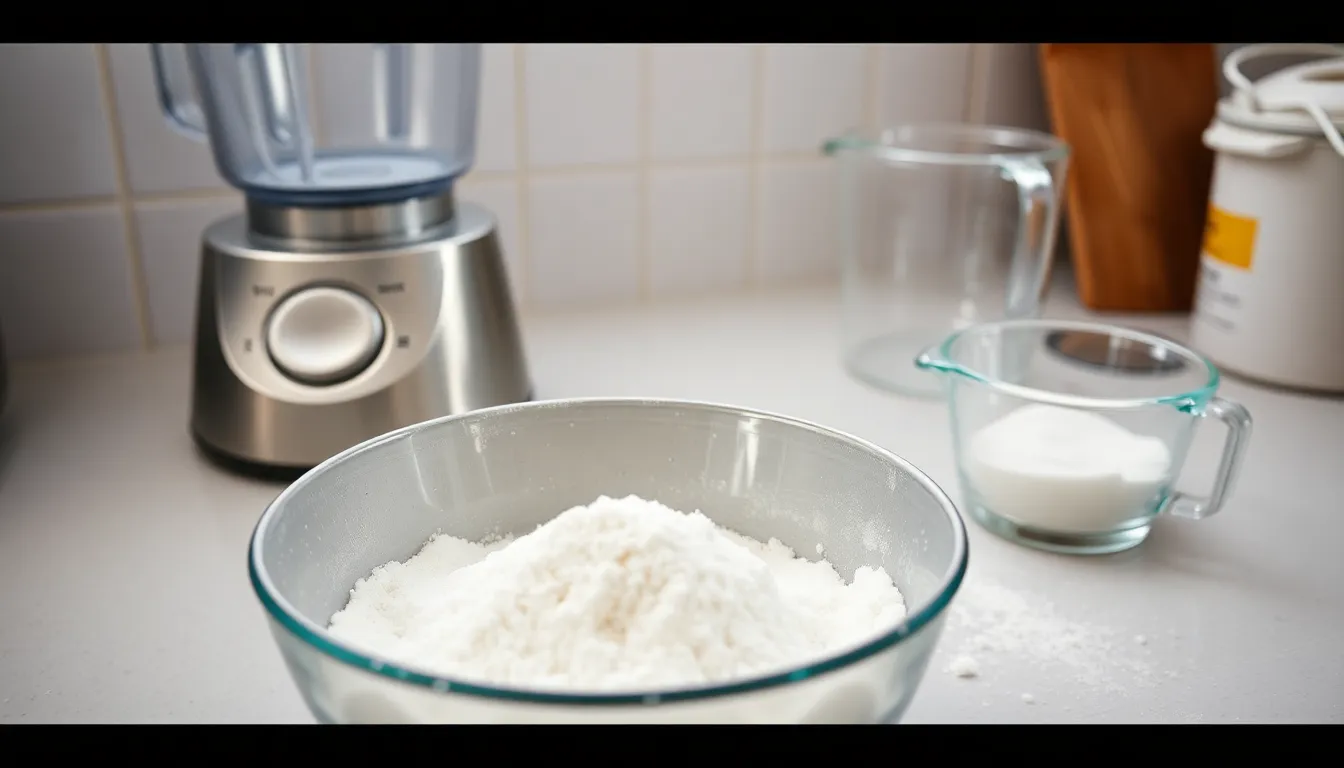
While caster sugar offers unique benefits for baking, we can use several alternatives when this superfine ingredient isn’t available. These substitutions require careful consideration of ratios and expected texture changes to achieve optimal results.
Emergency Substitutes
When caster sugar runs out mid-recipe, we have reliable options that deliver excellent results. Granulated sugar serves as the most accessible substitute since it’s available in virtually every kitchen. We can transform regular granulated sugar into a superfine alternative by pulsing it in a clean, dry blender or food processor for 30-60 seconds until it reaches a fine consistency.
Powdered sugar works as an emergency substitute in exact situations, though we must exercise caution with this option. The added cornstarch and extremely fine texture make powdered sugar unsuitable for recipes requiring creaming or structural integrity. We recommend avoiding powdered sugar in meringues and whipped creams where texture precision matters most.
The grinding method requires attention to prevent over-processing. We pulse granulated sugar in short bursts, checking frequently to ensure we achieve the desired fineness without creating powdered sugar. This homemade version performs nearly identically to store-bought caster sugar in most applications.
Conversion Ratios
Understanding proper conversion ratios ensures consistent baking results when substituting different sugar types. We’ve compiled essential measurements that maintain recipe accuracy across various substitutions.
| Sugar Type | Measurement | Equivalent |
|---|---|---|
| Granulated to Caster Sugar | 1 cup granulated sugar | 1 cup ground very fine |
| Caster Sugar to Granulated Sugar | 1 cup caster sugar | 1 cup granulated sugar |
| Granulated to Powdered Sugar | 1 cup granulated sugar | 1¾ cups powdered sugar |
Granulated sugar substitutes for caster sugar using a 1:1 ratio when ground to fine consistency. We expect slight differences in dissolving rates, though the final results remain remarkably similar in most recipes.
Powdered sugar requires volume adjustments when used as an emergency substitute. We recommend using approximately 10% less powdered sugar by volume since it’s significantly lighter than caster sugar. This substitution typically produces smoother, denser textures in the final product.
Golden caster sugar presents unique substitution challenges since it’s unrefined and retains natural molasses. We cannot substitute golden caster sugar directly for brown sugar even though similar appearances, as they serve different purposes in baking applications.
Conclusion
Now that we’ve explored the industry of caster sugar you can see why it’s become an essential ingredient in our baking arsenal. This superfine sugar isn’t just another pantry staple – it’s the secret to achieving professional-level results in our favorite desserts.
Whether you’re whipping up delicate meringues or creating silky buttercreams caster sugar’s quick-dissolving properties make all the difference. We’ve shown you how to make it at home find it in stores and use it effectively in your recipes.
The next time you’re baking remember that choosing the right sugar can elevate your results from good to exceptional. With caster sugar in your kitchen you’re equipped to tackle even the most delicate baking challenges with confidence.
Frequently Asked Questions
What is caster sugar and how is it different from regular sugar?
Caster sugar is a superfine sugar with crystals that fall between granulated and powdered sugar in size. Its fine texture, resembling table salt or very fine sand, allows it to dissolve much faster than regular granulated sugar. This quick dissolution makes it ideal for delicate baked goods like meringues, sponge cakes, and buttercreams, where smooth texture is essential.
Can I make caster sugar at home?
Yes, you can easily make caster sugar at home using granulated sugar and a blender, food processor, or coffee grinder. Simply pulse the granulated sugar for 10-30 seconds until it reaches a fine, sand-like texture. Be careful not to over-process, as this will turn it into powdered sugar. Store in an airtight container to maintain its fine texture.
What’s the difference between golden caster sugar and regular caster sugar?
Golden caster sugar retains natural molasses, giving it a golden-brown color and slight caramel-like flavor. Regular caster sugar is white and neutral-tasting, made from fully refined sugar cane or beet. Golden caster sugar adds subtle depth and complexity to baked goods, while regular caster sugar is ideal for recipes where you want pure sweetness without additional flavor.
Where can I buy caster sugar?
Most major grocery stores carry caster sugar in their baking aisles, often labeled as “superfine sugar” or “baker’s sugar.” Specialty grocery stores may offer wider selections, including organic and golden varieties. Online retailers like Amazon and specialty baking suppliers also provide various brands and bulk options if you can’t find it locally.
What are the best substitutes for caster sugar?
The best substitute is homemade superfine sugar made by pulsing granulated sugar in a food processor. Use a 1:1 ratio when properly ground. Powdered sugar can work in some recipes but use 10% less by volume due to added cornstarch. Regular granulated sugar works for most recipes but may create slightly different textures in delicate baked goods.
Why is caster sugar better for meringues and whipped cream?
Caster sugar’s fine crystals dissolve quickly and completely in egg whites and cream, preventing grittiness and maintaining the light, airy texture essential for meringues and whipped cream. Regular granulated sugar may not dissolve fully, creating an unpleasant gritty texture that can weigh down these delicate preparations and affect their stability.
How should I store caster sugar?
Store caster sugar in an airtight container at room temperature in a cool, dry pantry away from direct sunlight and moisture. Proper storage maintains its fine texture and quick-dissolving properties. Check regularly for any signs of moisture or clumping, and avoid storing near heat sources or in humid environments that could affect its quality.
Can I use brown sugar instead of golden caster sugar?
No, brown sugar and golden caster sugar serve different purposes despite both containing molasses. Brown sugar has a coarser texture and higher moisture content, making it unsuitable for recipes requiring the fine, quick-dissolving properties of golden caster sugar. Golden caster sugar provides subtle caramel notes while maintaining the structural benefits of superfine sugar.

